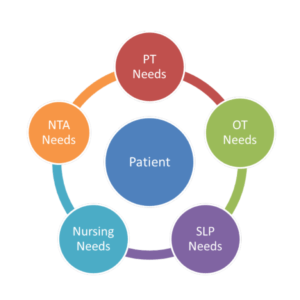Congress addresses post-acute care payment reform
Now that Congress has scrapped the sustainable growth rate (SGR) formula for a new and improved payment system for physicians, a House subcommittee is turning its attention to reforming how Medicare pays post-acute care (PAC) facilities for their services.
April 16, the House Energy and Commerce Committee’s health subcommittee held a hearing to consider options for improving Medicare PAC delivery while at the same time instituting payment reforms to encourage higher quality of care at less cost and discourage practices designed to game the system for profit.
A key witness at the hearing was Mark E. Miller, PhD, executive director of the Medicare Advisory Commission (MedPAC), who reiterated the commission’s assessment that significant changes are needed in payment policies to skilled nursing facilities (SNFs), long-term care hospitals (LTCHs), home health agencies (HHAs) and inpatient rehabilitation facilities (IRFs).
According to MedPAC, Medicare’s payments to PAC providers totaled $59 billion in 2013, more than doubling since 2001, and the agency spends nearly as much on post-acute care and readmissions in the first 30 days after discharge as it does for the initial hospital admission.
SNFs, HHAs drive up costs
Miller said the “intensification of rehabilitation services furnished by SNFs drove the more than two-fold increase in spending on these services.”
But, he added, the “explosive growth” in the number of home health agencies, the increased number of beneficiaries receiving home healthcare and the amount of care beneficiaries receive explain the more than doubling of Medicare’s spending on home healthcare services.
Payments to IRFs and LTCHs grew rapidly after those sectors adopted prospective payment systems, he said, but moderated once policies to address that problem were instituted.
Miller pointed out that payments vary widely for similar services provided in all four settings, a fact that subcommittee chairman Rep. Joseph R. Pitts (R-PA) said needs to be addressed.
“The commission maintains that Medicare needs to move away from FFS (fee for service) payment and toward integrated payment and delivery systems that are focused on the patient’s needs, coordinating care and ensuring positive outcomes,” Miller said.
Some MedPAC recommendations
To increase the equity of Medicare’s policies toward providers who have a role in care coordination, Miller said MedPAC has recommended payments be reduced to both SNFs and HHAs with relatively high risk-adjusted readmission rates. Those policies would be based, he explained, on providers’ performance relative to a target rate. Providers above the target would see a reduction in their payments, whereas providers below the target would not.
MedPAC also is advocating a bundled payment program under which Medicare would pay for providing an array of services to a beneficiary over a defined period of time, covering all PAC services following a hospitalization.
“This bundle design would give all the PAC settings involved in providing care an incentive to provide high-quality care in the most efficient setting and to tailor the services provided to the patient’s needs,” Miller said. Such an approach would yield significant savings over time by replacing inefficient and unneeded care with a more effective mix of services, he added.
Dealing with abuse
Other reforms are needed, Miller asserted, noting that biases in the HHA and SNF prospective payment systems make some patients and services more profitable than others, and that Medicare payment incentives can influence providers’ decisions.
He noted that the SNF payment system pays on a per-day basis, which may encourage longer than necessary stays, and that the home health payment system pays per episode, which may create an incentive to generate additional episodes of care. In fact, Miller said, from 2002 to 2013, the total number of home health episodes increased by almost 64 percent.
“The commission believes that Medicare must concurrently refine its FFS policies while exerting pressure on providers to control their costs and be receptive to new payment methods and delivery reforms,” Miller said.
New ‘bundling’ bill introduced
The hearing followed introduction in March of H.R. 1458, the Bundling and Coordinating Post-Acute Care (BACPAC) Act, which its sponsors say would coordinate care for seniors when they leave the hospital and create incentives that would result in savings of an estimated $20 to $50 billion.
The bill was introduced by Rep. David B. McKinley, PE (R-WV) with Rep. Jerry McNerney (D-CA) and Rep. Tom Price (R-GA), chairman of the House Budget Committee and a physician.
“This bill is designed to foster the delivery of high-quality post-acute care services in the most cost-effective manner, while preserving the ability of patients, with guidance from their physician, to select their preferred provider of PAC services,” said Rep. Joseph R. Pitts, health subcommittee chairman, in opening the hearing.
“This is the type of legislation that has the potential to promote healthy competition among PAC providers on the basis of quality, cost, accountability and customer service while advancing innovation in care coordination, medication management and hospitalization avoidance,” he said.
Under the bill, for “qualifying discharges” occurring on or after Jan. 1, 2016, a single payment amount would be provided to a “PAC coordinator” rather than a variety of payments made under Medicare Parts A and B. The PAC bundle would cover services given to an individual for up to 90 days after discharge or the date when the patient is admitted to a hospital for a condition unrelated to the acute care inpatient stay.
PAC services would include:
- Post-hospital extended care services;
- Home health services;
- Inpatient services provided in a rehabilitation facility;
- Inpatient hospitals services provided by a LTCH;
- Durable medical equipment;
- Outpatient prescription drugs and biologicals; and
- SNF services.
They would not include physicians’ services, hospice care, outpatient hospital services, ambulance services, outpatient physical therapy services or outpatient speech-language pathology services, among others.
Among organizations also submitting testimony to the House subcommittee were the American Health Care Association, the Partnership for Quality Home Healthcare (PQHH), the Committee to Preserve Rehabilitation and the American Medical Rehabilitation Providers Association. All of the aforementioned groups, except PQHH, expressed concerns with the BACPAC Act. Read more here.
Related content:
House subcommittee hears about bundled payments from post-acute care groups
Act aims to coordinate post-acute care to realize savings

Robert Gatty has more than 40 years of experience in journalism, politics and business communications and is the founder and president of G-Net Strategic Communications based in Myrtle Beach, South Carolina. He can be reached at bob@gattyedits.com.
Related Articles
Topics: Articles , Medicare/Medicaid , Regulatory Compliance









